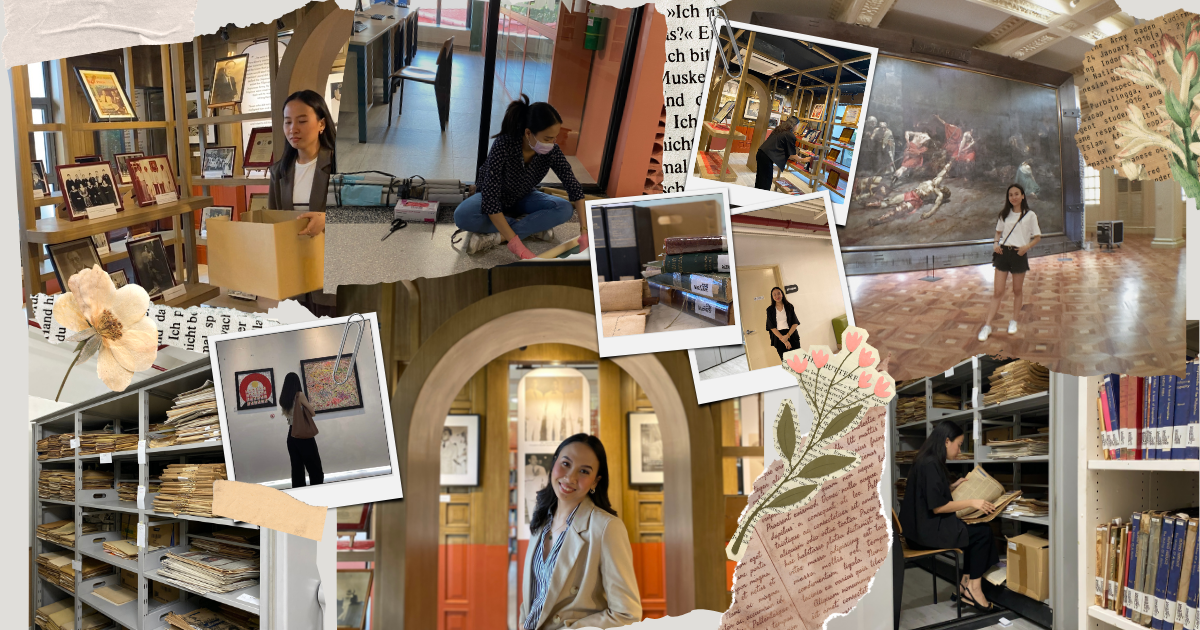October is Museum and Galleries Month, a celebration of the spaces that keep our stories visible and our culture alive. We walk through exhibits, admire artworks, and take photos of beautifully preserved pieces. But beyond the frames and artifacts are people who make remembering possible, the ones who make sure that the stories behind every letter, photograph, or relic aren’t lost to time.
One of them is Carmina Pestaño, an archivist who didn’t always see herself in this line of work. “History was actually one of my least favorite subjects, right next to math,” she says with a laugh. “I wanted to be a special education teacher, but life had other plans.”
She enrolled in Library and Information Science, a course she hadn’t even heard of before, and later worked as a librarian. Then one day, she was asked to lead a museum tour for students—and something changed. “There was something about being in a museum that felt right,” she recalls. “Almost like coming home.”
1. Turning Fragments Into Stories
Carmina sees archiving as an act of storytelling. Every record, photo, or handwritten note has a life of its own, and her role is to bring that life back into focus. “Every photo, letter, or document has a story behind it,” she says. “You have to dig through clues to figure out who, what, and when.”
Her favorite part of the job is uncovering connections that others might miss. “We take care of people’s voices,” she says. “We make sure they continue to be heard.”
2. Preserving Culture Against the Odds
Working as an archivist in the Philippines means contending with a warm climate, unpredictable weather, and limited preservation resources. Yet, for Carmina, that challenge gives the work its meaning. “Many of the records we preserve are not just institutional but also part of family and community memory,” she explains. “Every piece carries a personal story.”
Each item she saves represents resilience, a proof of what has endured despite everything that could have been lost.
3. Discoveries You Don’t Expect
Some of Carmina’s most fulfilling moments come from unplanned discoveries. She recalls searching for a photograph connected to a delegate from the Malolos Congress and ending up with a box of Spanish manuscripts from the 1800s.
“I had forgotten most of my Spanish,” she admits, “but I remembered a workshop on paleography—the study of ancient writing—and used what I learned to decipher the text.”
She never found the exact photograph she was looking for, but she did uncover a related document that revealed more than expected. “Even when you don’t find what you’re looking for,” she says, “you often discover something just as valuable.”
4. When History Feels Human
For Carmina, archives are not just about preserving the past, but about making it relatable. “It’s one thing to read a history book,” she says. “But it’s another to hold a letter written a century ago or to see a handwritten draft of a speech that shaped the nation.”
When students visit her archive and see these documents, she sees a shift in their faces, a realization that history isn’t abstract, but lived. “That moment,” she says, “is when history becomes personal.”
5. The Path You Don’t Plan For
Carmina’s story shows that the right path doesn’t always announce itself early. “I thought I’d go in a completely different direction,” she says. “But along the way, I discovered that archives brought together things I never expected to enjoy—history, research, preservation, even detective work.
Her career is built on the kind of curiosity that rewards patience and persistence. “Finding your own path means allowing yourself to grow in directions you didn’t imagine,” she reflects. “Sometimes the turns in life you never saw coming are the ones you were meant to take.”
Why This Work Matters
As we celebrate Museum and Galleries Month, Carmina’s story reminds us that preserving the past is a creative act in itself. In a world where information can disappear in seconds, archivists like her safeguard the things that make us who we are—our stories, our roots, our collective memory.
Her work also marks the beginning of a new PULSE series, “May Ganun Pala?" Through it, we’ll meet people whose jobs may not always fit the traditional mold of art or creativity, but who prove that meaning can be found in the most unexpected places.
For Carmina, creativity is found in the quiet act of care, in the patience to listen to what history still has to say.

